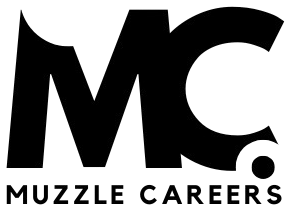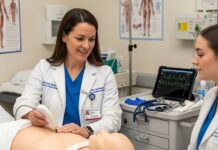Healthcare professionals around the world just received some of the best immigration news in months. On August 19, 2025, Immigration, Refugees and Citizenship Canada (IRCC) issued 2,500 invitations to apply for permanent residency specifically to healthcare and social service workers through Express Entry. The CRS cut-off score was 470, and here’s the part that matters most: no job offer required.
This targeted draw represents a significant shift in Canada’s approach to healthcare immigration. While most skilled workers struggle through the traditional pathways that demand pre-arranged employment, healthcare professionals now have a direct route to permanent residency that recognizes their qualifications and addresses Canada’s urgent healthcare staffing needs.
Understanding Canada’s Healthcare Immigration Landscape
Canada faces a healthcare worker shortage that has reached crisis levels in many provinces. The Canadian Medical Association reported that over 6.5 million Canadians lack access to a family physician, while nursing shortages have forced hospital ward closures across the country. This reality has pushed IRCC to create targeted pathways that streamline immigration for healthcare professionals.
The Express Entry system traditionally operated through general draws where all occupations competed for invitations. Healthcare workers often found themselves disadvantaged despite their qualifications because they couldn’t secure job offers from abroad. The targeted draws change this dynamic entirely by creating category-specific invitation rounds.
These healthcare-focused draws have become more frequent and larger in scale. The August 19 draw represents the third-largest healthcare-specific invitation round in 2025, signaling Canada’s commitment to attracting international healthcare talent through Express Entry rather than requiring provincial nomination programs or job offers.
Who Qualifies for Healthcare Immigration to Canada
The healthcare and social service occupations category covers a broad range of professionals that extends far beyond doctors and nurses. IRCC’s targeted draws include registered nurses, licensed practical nurses, nurse practitioners, physicians, specialists, physiotherapists, occupational therapists, social workers, psychologists, dental hygienists, medical laboratory technologists, respiratory therapists, and diagnostic medical sonographers.
Allied health professionals also qualify under this category. Medical radiation technologists, pharmacy technicians, paramedics, community health workers, and rehabilitation assistants are among the occupations that receive invitations during these targeted draws. The key requirement is that the primary occupation must fall under specific National Occupational Classification (NOC) codes designated for healthcare and social services.
Work experience requirements follow the same standards as general Express Entry draws. Candidates need at least one year of continuous full-time work experience (or equivalent part-time) in their primary occupation within the past ten years. This experience must be in a skilled occupation that matches their education and training.
International credentials present both opportunities and challenges for healthcare workers. While Canada recognizes the value of international training, most healthcare professions require credential recognition or licensing before practice. The good news is that permanent residents can complete these processes after arrival, giving them time to meet provincial licensing requirements while maintaining their immigration status.
The Express Entry Process for Healthcare Workers
Creating an Express Entry profile marks the first step toward permanent residency for healthcare professionals. The system evaluates candidates through the Comprehensive Ranking System (CRS), which awards points for age, education, language ability, work experience, and additional factors like Canadian education or arranged employment.
Language testing requirements cannot be overlooked in this process. Healthcare professionals must demonstrate proficiency in English, French, or both official languages through approved tests. For English, the International English Language Testing System (IELTS) General Training or the Canadian English Language Proficiency Index Program (CELPIP) are the most common options. French speakers can take the Test d’évaluation de français (TEF) or Test de connaissance du français (TCF).
The language scores directly impact CRS rankings, making strong performance critical for meeting cut-off scores in targeted draws. Healthcare professionals should aim for Canadian Language Benchmark (CLB) level 9 or higher in all four language skills (reading, writing, listening, speaking) to maximize their CRS points.
Educational credential assessment through approved organizations is mandatory for Express Entry eligibility. Healthcare professionals must obtain an Educational Credential Assessment (ECA) report that verifies their foreign education meets Canadian standards. World Education Services (WES), Comparative Education Service (CES), and International Credential Assessment Service of Canada (ICAS) are the primary organizations that provide these assessments.
The assessment process typically takes several weeks and requires official transcripts, degree certificates, and professional licenses sent directly from issuing institutions. Healthcare professionals should start this process early, as delays in obtaining documents from home countries can extend timelines significantly.
Understanding CRS Scoring for Healthcare Professionals
The CRS cut-off of 470 for the August 19 healthcare draw provides insight into competitive scoring ranges for this category. Healthcare professionals can optimize their scores through several strategies that recognize their professional backgrounds and qualifications.
Age represents the largest single factor in CRS calculations, with maximum points awarded to candidates between 20 and 29 years old. Healthcare professionals in their thirties and forties can still achieve competitive scores through strong performance in other categories, particularly education and language proficiency.
Education points favor advanced degrees, which many healthcare professionals possess. A master’s degree or professional degree (like medical or dental degrees) earns significantly more points than bachelor’s degrees. Healthcare professionals with postgraduate training, residencies, or specialized certifications should ensure their ECA reports accurately reflect the Canadian equivalent of their qualifications.
Work experience points accumulate based on years of skilled work experience, with maximum points awarded for six or more years. Healthcare professionals often have lengthy careers that can maximize this category. The system also awards additional points for foreign work experience when candidates have Canadian work experience, though this applies primarily to those who have worked in Canada previously.
Language proficiency can dramatically impact CRS scores. Strong performance across all four language skills can add substantial points to a profile. Healthcare professionals who are native English or French speakers, or those who have worked in English or French-speaking healthcare environments, often have advantages in this category.
Additional factors can provide crucial point boosts for healthcare professionals near cut-off thresholds. A job offer (though not required for targeted draws) adds 50 to 200 points depending on the position. Canadian education credentials, provincial nominations, French language ability, and Canadian work experience all provide point bonuses that can elevate profiles above cut-off scores.
Preparing Documentation for Your Application
Successful Express Entry applications require meticulous documentation that proves eligibility and supports CRS claims. Healthcare professionals must gather comprehensive records that span their education, work experience, and personal circumstances.
Educational documentation starts with degree certificates and transcripts from all post-secondary institutions attended. These documents must be official copies sent directly from institutions to ECA organizations. Healthcare professionals with professional degrees, residency training, or continuing education certificates should include all relevant credentials in their assessment requests.
Professional licensing documentation supports work experience claims and demonstrates qualifications. Current licenses, registration certificates, and good standing letters from regulatory bodies provide evidence of professional status. Healthcare professionals should obtain these documents before beginning the Express Entry process, as licensing bodies may take weeks to provide official documentation.
Work experience verification requires detailed employment letters that meet specific IRCC requirements. These letters must include job titles, employment dates, hours worked per week, annual salary, and detailed descriptions of duties and responsibilities. The descriptions should align with NOC code requirements for the claimed occupation. Supervisors, human resources departments, or official company letterhead must authenticate these letters.
Supporting employment documentation includes contracts, pay stubs, tax documents, and performance evaluations that corroborate employment claims. Healthcare professionals should gather these materials from all qualifying work experience periods, ensuring they can demonstrate continuous employment and career progression.
Personal documentation requirements include passports, birth certificates, marriage certificates (if applicable), and police clearance certificates from all countries where the candidate has lived for six months or longer since age 18. These documents must be current and meet specific formatting requirements outlined in IRCC guidelines.
Financial documentation proves settlement funds requirements for principal applicants and their families. Bank statements, investment accounts, and other liquid assets must demonstrate sufficient funds to support initial settlement in Canada. The required amounts vary based on family size and are updated annually by IRCC.
Provincial Licensing and Credential Recognition
Permanent residency through Express Entry provides the legal status to live and work in Canada, but healthcare professionals must meet provincial licensing requirements before practicing their professions. Each province and territory maintains its own regulatory bodies and licensing processes for healthcare occupations.
Medical licensing in Canada varies significantly by province and medical specialty. International medical graduates must typically complete medical examinations, residency programs, and assessment processes specific to their intended province of practice. The Medical Council of Canada provides national examinations, while provincial colleges handle licensing and practice permits.
Nursing registration follows provincial processes administered by regulatory bodies in each province. Registered nurses typically need to pass the Canadian Registered Nurse Examination (CRNE) or the National Council Licensure Examination for Registered Nurses (NCLEX-RN), depending on the province. Licensed practical nurses face similar requirements through provincial regulatory bodies.
Allied health professional licensing varies by occupation and province. Physiotherapists, occupational therapists, social workers, and other regulated healthcare professionals must meet specific educational, examination, and practical requirements set by their respective provincial regulatory bodies. Some professions require additional training or bridging programs to meet Canadian standards.
The licensing process often begins before arrival in Canada. Many regulatory bodies accept applications from international candidates and provide assessment services that identify gaps between international qualifications and Canadian requirements. Healthcare professionals can use this information to plan bridging education or additional training while maintaining their permanent resident status.
Language requirements for professional practice often exceed Express Entry minimums. Healthcare regulatory bodies typically require higher language proficiency levels to ensure patient safety and effective communication. Healthcare professionals should plan for additional language training if their initial scores meet Express Entry requirements but fall short of professional licensing standards.
Recent Healthcare Immigration Draw Trends
Canada’s healthcare immigration draws have shown consistent patterns that help predict future invitation rounds and cut-off scores. The frequency and size of these draws reflect ongoing healthcare workforce needs and government priorities for addressing staffing shortages.
Draw frequency for healthcare occupations has increased substantially in 2025. IRCC conducted healthcare-specific draws approximately every six to eight weeks throughout the year, compared to quarterly draws in previous years. This increased frequency indicates sustained demand for healthcare professionals and suggests the trend will continue.
Invitation volumes have grown progressively larger. The August 19 draw of 2,500 invitations represents a significant increase from typical draws of 1,000 to 1,500 invitations in previous years. Larger invitation rounds create more opportunities for healthcare professionals while maintaining competitive CRS cut-off scores.
CRS cut-off trends show relative stability in the 460 to 485 range for healthcare draws throughout 2025. The August 19 cut-off of 470 falls within this typical range, suggesting healthcare professionals with CRS scores above 475 have strong chances of receiving invitations in future draws.
Geographic distribution of invitations shows healthcare professionals from diverse countries receiving invitations. India, Philippines, Nigeria, Pakistan, and Brazil represent the largest source countries for healthcare immigration, reflecting both the global healthcare workforce and existing educational partnerships with Canadian institutions.
Processing times for healthcare applications have improved as IRCC prioritizes these cases. Most healthcare Express Entry applications receive processing within four to six months, compared to standard processing times of six months or longer for general applications. This acceleration reflects Canada’s urgent need for healthcare workers and streamlined processing for these occupations.
Building a Competitive Express Entry Profile
Healthcare professionals can take specific steps to optimize their Express Entry profiles and improve their chances of receiving invitations in targeted draws. Understanding the system’s scoring mechanisms allows candidates to focus their preparation efforts on areas with the greatest impact.
Language improvement often provides the most accessible path to higher CRS scores. Healthcare professionals should invest time in achieving Canadian Language Benchmark level 10 or higher across all four language skills. Professional language training programs, online courses, and practice tests can help candidates achieve target scores that significantly boost their CRS rankings.
Educational upgrades may benefit healthcare professionals whose initial degrees don’t maximize education points. Completing additional certifications, diplomas, or degrees can increase CRS scores, particularly for candidates with bachelor’s degrees who could pursue master’s level education. Online programs from Canadian institutions provide additional points for Canadian education credentials.
Professional development activities demonstrate ongoing commitment to healthcare practice and may support stronger ECA assessments. Continuing education courses, professional certifications, and conference attendance show active engagement in professional growth that strengthens Express Entry profiles.
Documentation preparation should begin months before profile creation. Healthcare professionals should start gathering employment letters, educational transcripts, and professional licenses early in their immigration planning. Having complete documentation ready allows for quick profile creation when targeted draws occur.
Strategic timing considerations can impact invitation chances. Healthcare professionals should monitor draw patterns and ensure their profiles are active during periods when healthcare draws typically occur. Maintaining updated profiles with current information ensures eligibility when invitations are issued.
Financial Planning for Healthcare Immigration
Moving to Canada requires substantial financial planning beyond the settlement funds requirements for Express Entry. Healthcare professionals should prepare comprehensive budgets that account for immediate settlement costs, licensing expenses, and potential income gaps during credential recognition processes.
Settlement fund requirements represent minimum amounts that IRCC mandates for Express Entry candidates. For 2025, single applicants need proof of $14,690 CAD, while families require higher amounts based on size. These funds must be readily available and documented through bank statements or investment accounts.
Additional settlement costs extend well beyond minimum requirements. Healthcare professionals should budget for temporary accommodation, transportation, household setup, and living expenses during their first months in Canada. Realistic budgets often require two to three times the minimum settlement amounts to ensure comfortable transitions.
Professional licensing costs vary by occupation and province but can range from hundreds to thousands of dollars. Medical licensing processes often require substantial fees for examinations, assessments, and registration. Healthcare professionals should research specific costs for their intended province and occupation before immigration.
Bridging program expenses may be necessary for healthcare professionals whose credentials require additional training or education to meet Canadian standards. These programs can cost several thousand to tens of thousands of dollars, depending on the scope and duration of required training.
Income replacement planning accounts for potential employment gaps during licensing and job search processes. Healthcare professionals may need several months to complete licensing requirements and secure employment. Emergency funds covering six to twelve months of living expenses provide financial security during this transition period.
Healthcare Job Market Insights by Province
Canada’s healthcare job market varies significantly by province, with different regions offering distinct opportunities and challenges for international healthcare professionals. Understanding provincial differences helps candidates make informed decisions about where to settle and practice.
Ontario represents Canada’s largest healthcare market with extensive opportunities in urban centers like Toronto, Ottawa, and Hamilton. The province faces severe physician shortages in rural and northern communities, creating opportunities for family physicians and specialists willing to practice outside major cities. Nursing opportunities exist across all sectors, from hospitals to long-term care facilities.
British Columbia offers healthcare opportunities concentrated in Vancouver and Victoria, with growing needs in interior and northern regions. The province’s aging population drives demand for geriatric specialists, home care nurses, and allied health professionals. BC’s recognition processes for international credentials are generally well-established across healthcare occupations.
Alberta’s healthcare system provides opportunities in Calgary and Edmonton, with significant rural and remote practice needs. The province actively recruits international physicians through various programs and offers competitive compensation packages. Oil industry workers and their families create steady demand for occupational health services.
Quebec represents a unique market for French-speaking healthcare professionals, with language requirements that favor bilingual or French-speaking candidates. The province offers distinct immigration pathways for healthcare workers and has established processes for credential recognition that align with its professional regulatory systems.
Atlantic provinces (New Brunswick, Nova Scotia, Prince Edward Island, and Newfoundland and Labrador) offer smaller markets with strong community connections and lifestyle benefits. These provinces actively recruit healthcare professionals through provincial nominee programs and provide incentive packages for rural practice.
Prairie provinces (Manitoba and Saskatchewan) present opportunities in both urban and rural settings, with particular needs for family physicians, specialists, and mental health professionals. These provinces often have shorter licensing processes and strong support systems for international healthcare graduates.
Next Steps for Healthcare Professionals
Healthcare professionals interested in Canada immigration through Express Entry should begin their preparation immediately, given the competitive nature of targeted draws and the time required for documentation and testing processes.
Language testing should be the first priority for most candidates. Booking IELTS, CELPIP, TEF, or TCF tests well in advance ensures results are available when needed for Express Entry profile creation. Healthcare professionals should aim for scores that maximize their CRS points rather than just meeting minimum requirements.
Educational credential assessment begins with contacting approved organizations and understanding their specific requirements. Healthcare professionals should request official transcripts and degree certificates from their institutions early, as international document processing can take several weeks or months.
Express Entry profile creation follows completion of language testing and credential assessment. Healthcare professionals should ensure their profiles accurately reflect their qualifications, work experience, and personal circumstances to maximize CRS scores and avoid delays in application processing.
Professional research into licensing requirements for intended provinces helps healthcare professionals understand post-arrival processes and plan accordingly. Contacting regulatory bodies, researching bridging programs, and understanding examination requirements provides clarity about practice pathways in Canada.
Financial preparation should begin alongside immigration planning. Healthcare professionals should develop comprehensive budgets, begin saving for settlement and licensing costs, and research employment opportunities in their target provinces and communities.
The August 19, 2025 healthcare draw demonstrates Canada’s commitment to attracting international healthcare talent through accessible immigration pathways. With proper preparation and understanding of the Express Entry system, healthcare professionals can position themselves for success in future targeted draws and begin building their careers in Canada’s healthcare system.
Healthcare professionals who meet the CRS requirements have unprecedented opportunities to secure permanent residency without job offers through targeted Express Entry draws. The combination of Canada’s healthcare staffing needs and streamlined immigration processes creates favorable conditions for qualified international healthcare workers to begin new careers in Canada.
Discover more from MUZZLECAREERS
Subscribe to get the latest posts sent to your email.








